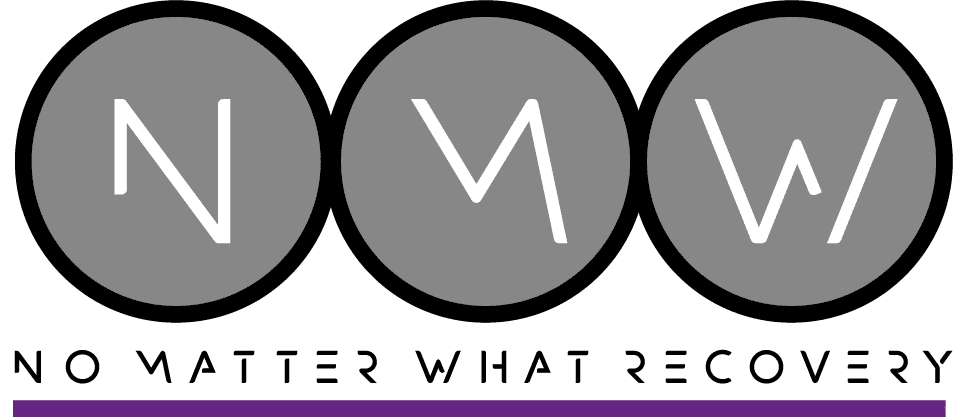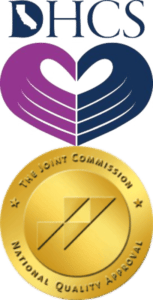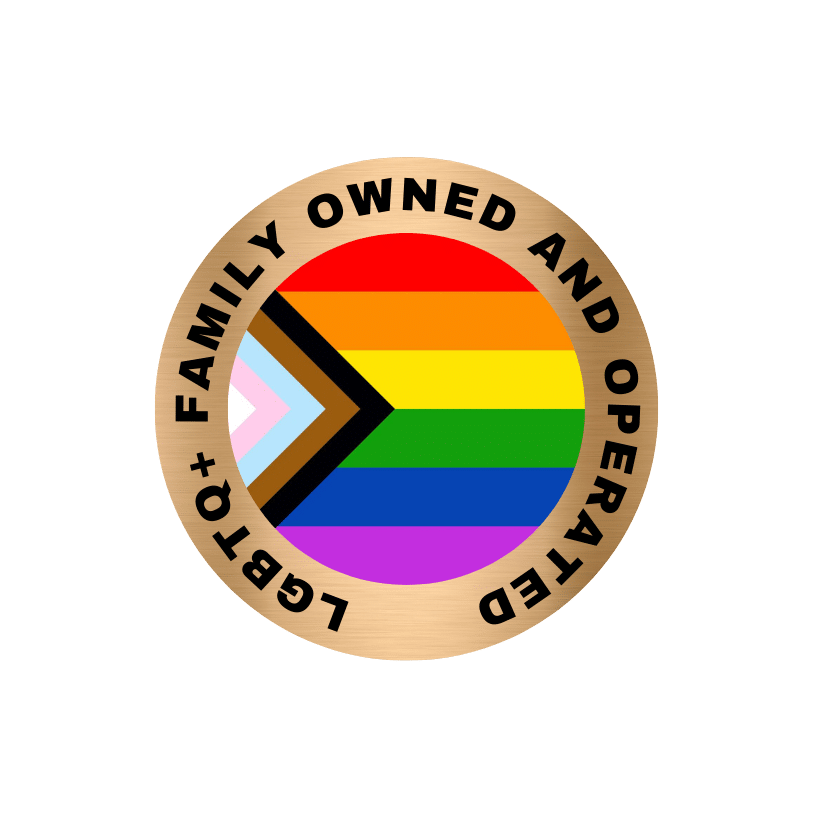National Recovery Month
Table of Contents
Every September is national recovery month in the United States. One in ten people in the U.S. admits to ever having a substance use disorder, with nearly 75% being in recovery1. Treatment programs can lessen the effects of substance use, especially for those with mental health illnesses.
Since 1989, Americans have used this month to increase addiction awareness, mental health treatment, and recovery. Recovery is possible thanks to the commitment of service providers and communities.
What is National Recovery Month?
National Recovery Month is dedicated to raising awareness about substance use disorders and mental illness. The objective is to let people know there is hope for people with mental health and substance use disorders to lead healthy and fulfilling lives.
People often recognize improvements in those managing health issues like cancer and diabetes. Recovery Month is here to highlight the accomplishments of those in addiction and mental health recovery.
Primarily, national recovery month is all about:
- Spreading positive messages that prevention works and treatment works
- Sharing living testimonies that people can and do recover
- Stressing the importance of behavioral health to overall health
- Recognizing the improvement made by those on the recovery journey
- Celebrating the nation's vibrant and proud recovery community
The lives of millions of Americans have changed through the rehabilitation process2. Recovery Month offers a platform for everyone to acknowledge these victories because they sometimes go unnoticed by the general public.
Many nationwide prevention, treatment, recovery programs, and facilities commemorate National Recovery Month in September. They discuss the progress made by people in recovery. They also share success stories with coworkers, friends, and neighbors.
Participating in the recovery month campaigns helps foster a greater understanding of mental health and substance use.
The History of National Recovery Month
The Substance Abuse and Mental Health Services Administration (SAMHSA) established National Recovery Month in 1989. The purpose of the commemoration was to raise public awareness of mental illness and substance misuse. They also highlighted the success stories to show that recovery-based living is feasible.
In June 2020, SAMHSA decided to resign from its recovery month-oversight role. They stopped planning the annual gathering of Recovery Month stakeholders, creating new themes and resources, and overseeing the events calendar.
The Faces and Voices of Recovery have taken over the role. They have developed a brand-new Recovery Month website that includes all activities and materials necessary for the celebration’s success. On the Recovery Month website, individuals can download graphics that they can share and search for and list upcoming events.
In the past, SAMHSA chose a yearly theme emphasizing a particular area of interest and producing a toolkit for group use. The topic for Recovery Month won’t be changed going ahead.
The Faces and Voices of recovery have adopted the 2021 theme “Every Person, Every Family, Every Community” as the official tagline for Recovery Month. However, the purpose of the month remains.
The Recovery Month commemoration will aim to promote and encourage:
- New evidence-based treatment and recovery methods
- The growth of a strong and proud recovery community
- The commitment of service providers and community members who make recovery in all its forms possible.
Recovery Month will keep spreading the word about:
- Substance use disorders
- Co-occurring disorders
- The efficacy of treatment
- Recovery resources
- The possibility of recovery.
Every person has gone through major and minor highs and lows. They are resilient nonetheless because of their strength, help, and hope from the community around them.
So, even as the national recovery month ends, people should not stop creating awareness and giving support.
What are Good National Recovery Month Activities?
Anyone can plan an event for Recovery Month with different activities. The Recovery Month website displays all nationwide events that different organizers fill. It also offers toolkits for anyone seeking to start an activity independently.
Most Recovery Month events and activities fit into the following broad categories:
Examples may include treatment specialists-led workshops to help raise awareness of substance abuse and recovery.
Support programs for recovering people bring them together so they can draw strength from one another.
Charity walks and rides can help fund local shelters and initiatives for community healing while raising awareness for a cause.
Various competitions, from essay writing to songs and poster creation, can engage people to think about recovery and express their thoughts through creativity.
Recovery-themed plays and films can make the rehabilitation journey more vivid to patients and the community while entertaining.
Fun activities such as dances, camping trips, picnics, and musical performances are common ways to bring people together and increase awareness.
People come together to celebrate and contribute to preserving their culture and recovering their family members.
Some events include celebrities passionate about addiction treatment or politicians campaigning for drug legislation. MLB, NFL, or other professional sports clubs may also provide their support to sporting activities.
A Recovery Month event doesn’t need to be extensive, expensive, or labor-intensive. It only requires a little preparation and a group of motivated people to succeed.
Sharing on social media is another simple way people can promote National Recovery Month. They can use the following approaches to encourage recovery support and education on social media:
- Use the resources from Recovery Month on your social media accounts or blogs.
- Post about your recovery journey or provide connections to other recovery journey accounts on your social media.
- Use the official hashtags to join the conversation on Facebook, Instagram, or Twitter for National Recovery Month.
- Post recovery-related links to their social media pages.
- Send out uplifting messages about protection, care, and rehabilitation.
- Promote Recovery Month-related activities and online recovery resources on social media.
Calendar Events During National Recovery Month
During national recovery month, there are many thrilling local and national events, including:
- Suicide Prevention Week from 5th September to 11th September (changes yearly)
- Recovery Month Kickoff Event on 9th September (changes annually)
- World Suicide Prevention Day on 10th September
- National Addiction Professionals Day on 20th September
- International Recovery Day on 30th September
Some of these dates may change yearly, such as the suicide prevention week, which starts from Monday to Friday around suicide prevention day.
How to Find National Recovery Month Events Near You
The best way for someone to celebrate national recovery month is by being a part of local events that make the most sense to them. They could attend a documentary, awareness walk, or conference to learn about addiction.
The starting point for the search is the national recovery month website. People post local and national events on this site.
Not every local event may be on the recovery month website because the listing is optional. It would be best for people to also check the resource listings for their neighborhood.
Social media is another place people can use to search for Recovery Month events near them. Besides sharing their recovery journey on social media with relevant hashtags, they could also use the hashtags to search for events.
Common recovery month hashtags include:
- #NationalRecoveryMonth
- #RecoveryMonth
- #Recovery
- #RecoveryIn[Your Location]
- #LanguageMatters
- #MakeSeptemberPurple
Part of the LGBTQ+ Community?
Recovery Month is a national celebration. Therefore, most recovery events are inclusive of all gender orientations. Members of the LGBTQ+ community are more than welcome at most recovery events. Recovery events and resources specific to LGBTQ+ people may also be available to promote and support recovery in the community.
LGBTQ+ individuals use drugs more often than their non-LGBT+ counterparts3 , hence the need to increase awareness among this population. Using drugs and alcohol is a personal choice. However, it presents severe risks to all types of users, and no group should feel left out.
The use of drugs or alcohol can often turn into an addiction or dependence. So, if LGBTQ+ individuals struggling with addiction and those recovering are not encouraged to speak out, their health and quality of life are at risk.
The first step to getting therapy and beginning recovery is realizing that one has an addiction. LGBTQ+ individuals need assurance that they are not alone on the road to recovery. Incredible resources are available to help LGBTQ+ people be a part of a loving community.
LGBT and Substance Abuse
LGBTQ+ people have a statistically higher risk of developing an addiction because they regularly deal with difficulties, including:
- Stigma
- Discrimination
- Healthcare Disparities
- Exclusionary Governmental Policies
- Social Rejection
- Harassment
- Violence
All these create obstacles to obtaining quality housing, healthcare, and employment. Some people use narcotics to cope with these daily injustices, prejudices, and homophobic actions.
The socialization aspect is another significant influence on addiction among the LGBTQ+. Bars are the center of many community events because they are their major social venue. Most alcohol brands also target the LGBTQ+ community in alcohol advertising by using the rainbow symbol on their branding.
Resources for LGBTQ+ Individuals Fighting Alcohol and Substance Use Addiction
Resources for members of the LGBTQ+ community are expanding across the country. They are primarily city-specific. We have provided various national online communities, social places, meetings, and other resources that can help.
Although there are many recovery paths, each person will need a customized strategy to address their specific needs. They can use the resources listed below to help in their sober journey:
Sober & Gay
For a safe, sober experience, the organization offers wellness programming, activities, and education to LGBTQ+ persons. Additionally, they provide free daily online support meetings accessible from anywhere worldwide.
Individuals can look out for Gay & Sober meetings near them on their website.
Alcoholic Anonymous (AA)
AA is a peer support system built around a 12-step community recovery program for people with AUD. Meetings are provided for LGBTQ+ individuals by their Gays and Lesbians in Alcoholics Anonymous (GAL-AA) branch. There is also literature in A.A. that details the recoveries of LGBTQ members.
Individuals can find more details on meetings in their area by visiting the GAL-AA website.
The Substance Abuse and Mental Health Services Administration (SAMHSA)
SAMHSA is crucial in collecting data on the experiences of LGBTQ+ people with AUD and mental health issues. Additionally, they are pushing for more inclusive treatment resource distribution in the U.S.
In addition to being a reliable source of AUD knowledge, SAMHSA also offers links to pertinent federal programs.
Individuals can start by visiting the LGBTQI+ page of SAMHSA to get access to these helpful tools.
The Trevor Project
A person’s mental health may be further strained if they go through drug addiction recovery as a young person. The Trevor Project is a crucial hotline that offers empathic therapy and support to LGBTQ+ young people by phone, text, or live internet chat.
They can text “Trevor” to 202-304-1200, phone their lifeline at 866-488-7386, or use the live chat feature on The Trevor Project website.
SMART recovery
While 12-step recovery programs have a good track record, many have religious overtones. Some LGBTQ+ individuals reject this strategy.
The SMART Recovery program is a peer-support rehab network based on secular techniques like cognitive behavioral therapy. The company provides both face-to-face meetings and online support.
For more on SMART Recovery groups, individuals can visit their website.
Smoke-free
It can be challenging for LGBTQ+ individuals to receive treatment for nicotine addiction. LGBT people are five times less likely to call a quit line and are less likely to have health insurance that will pay for their treatment.4
The LGBTQ-friendly helplines and treatment services are accessible through the U.S. government-backed Smokefree program. Additionally, there is a text chat facility and a download option for the quitSTART support app.
A person can find these resources on the LGBT part of Smokefree.
Prevention and Control for Disease (CDC)
The CDC is at the forefront of public health research and efforts. The organization is aware that a variety of variables contribute to nicotine addiction in LGBTQ+ individuals.
The CDC offers pertinent information and guidance about stopping smoking for LGBTQ+ people to reduce nicotine addiction in this community. They also provide parents of LGBT children with a guide.
For further details, a person can go to the CDC Pride Month page.
National LGBT Cancer Network
One of the scariest effects of nicotine addiction is cancer. The National LGBT Cancer Network provides informational materials on cancer caused by smoking and how to stop it. They also offer a dedicated quitline as part of their Outlast Tobacco campaign.
Individuals can visit the National LGBT Cancer Network’s resource page or use their Outlast Tobacco page to call the quitline.
Truth Initiative
The organization has done research on tobacco usage in LGBTQ+ populations. Considering that 35% of transgender individuals already smoke5, it is clear that more community outreach is required.
The Truth Initiative gives users access to research resources, mobile apps, and stop smoking plans.
They can visit the website to find resources for quitting vaping and smoking.
The LGBT National Help Center
The LGBT National Help Center offers tools and peer assistance for many concerns. The center offers support for recovering from addiction and mental health problems. The group provides support through its national, youth, and elderly hotlines. They also give users access to choices for online peer chat.
An individual can visit the LGBT National Help Center’s website or call their toll-free helpline at 888-843-4564 to access their services.
LGTBQ+ individuals can also join online communities such as LGBTteetotalers and Queers without Beers to connect with other LGBTQ+ members on their recovery journey.
There are also some resourceful podcasts they can listen to, such as:
They can also find many other meetings in their city by searching for LGBT+ friendly recovery meetings in their city’s name.
Find Support with No Matter What Recovery
No Matter What Recovery provides a setting where people won’t face discrimination for belonging to the LGBTQ+ community. With the help of our evidence-based treatment programs, they can strive toward a joyful and healthier future.
Our qualified professionals offer top-notch behavioral health therapies to help individuals manage symptoms. We know how critical it is to find a rehab facility that prioritizes their health and welfare without discrimination for being a part of the LGBTQ+ group.
No Matter What Recovery understands the trauma and the challenges they have encountered as a member of the LGBTQ+ community. We can assure them that life after recovery is possible even for an LGBTQ+ individual.
They can contact us today to schedule a free consultation and start their recovery journey.
References
- Prevalence and correlates of ever having a substance use problem and substance use recovery status among adults in the United States, 2018 – ScienceDirect https://www.sciencedirect.com/science/article/abs/pii/S0376871620303343
- 1 in 10 Americans report having resolved a significant substance use problem https://www.recoveryanswers.org/research-post/1-in-10-americans-report-having-resolved-a-significant-substance-use-problem/
- Substance Use and SUDs in LGBTQ* Populations | National Institute on Drug Abuse (NIDA) https://nida.nih.gov/research-topics/substance-use-suds-in-lgbtq-populations
- LGBTQ+ People Encounter Barriers to Quitting Successfully | CDC https://www.cdc.gov/tobacco/health-equity/lgbtq/quitting-tobacco.html
- LBGT History Month: Why are smoking rates higher in LGBT communities? https://truthinitiative.org/research-resources/targeted-communities/lbgt-history-month-why-are-smoking-rates-higher-lgbt
- Lesbian, Gay, Bisexual, Transgender, Queer, and Intersex (LGBTQI+) | SAMHSA https://www.samhsa.gov/behavioral-health-equity/lgbtqi
- LGBTQ+ Recovery Resources https://facesandvoicesofrecovery.org/2019/08/16/lgbtq-recovery-resources/



